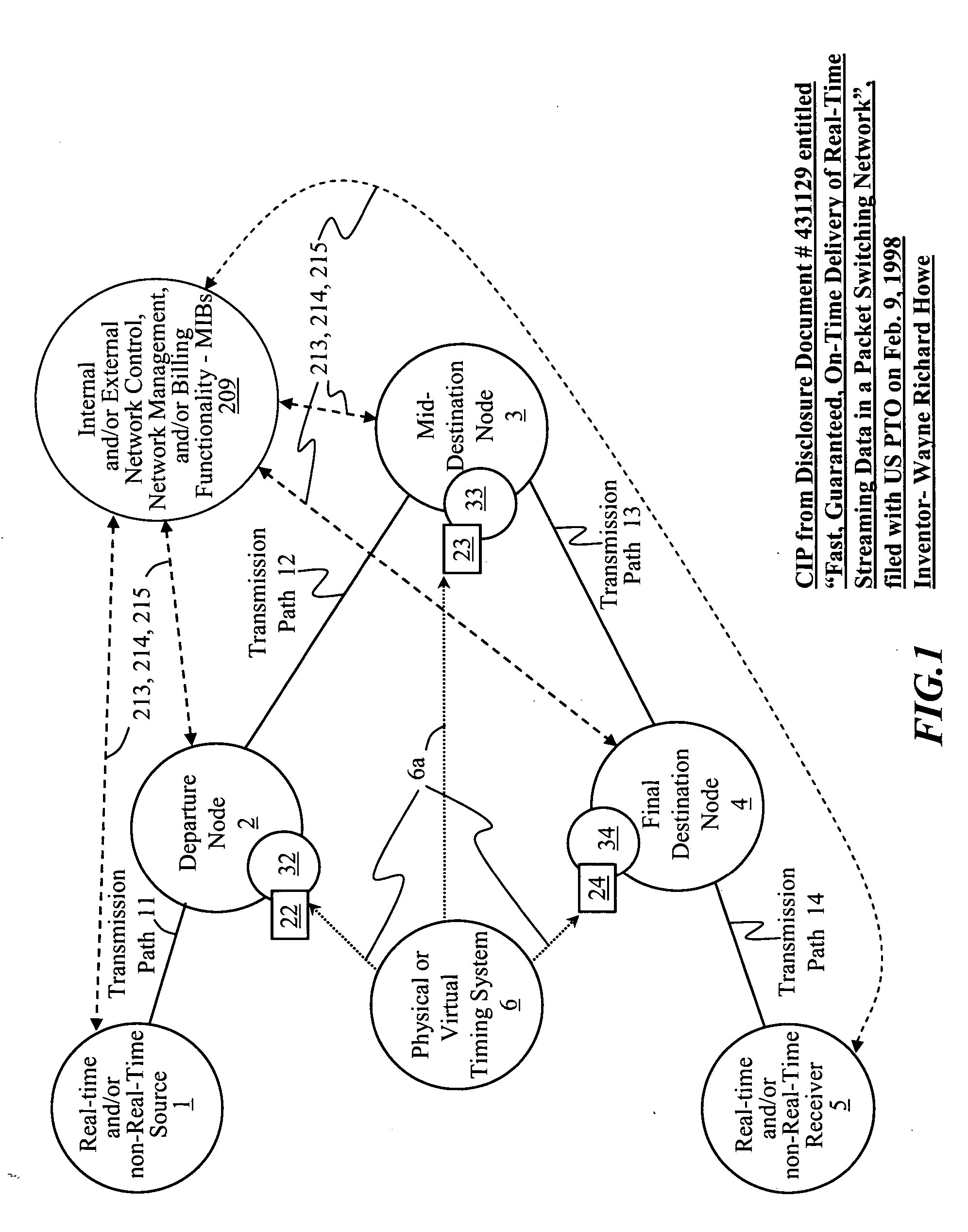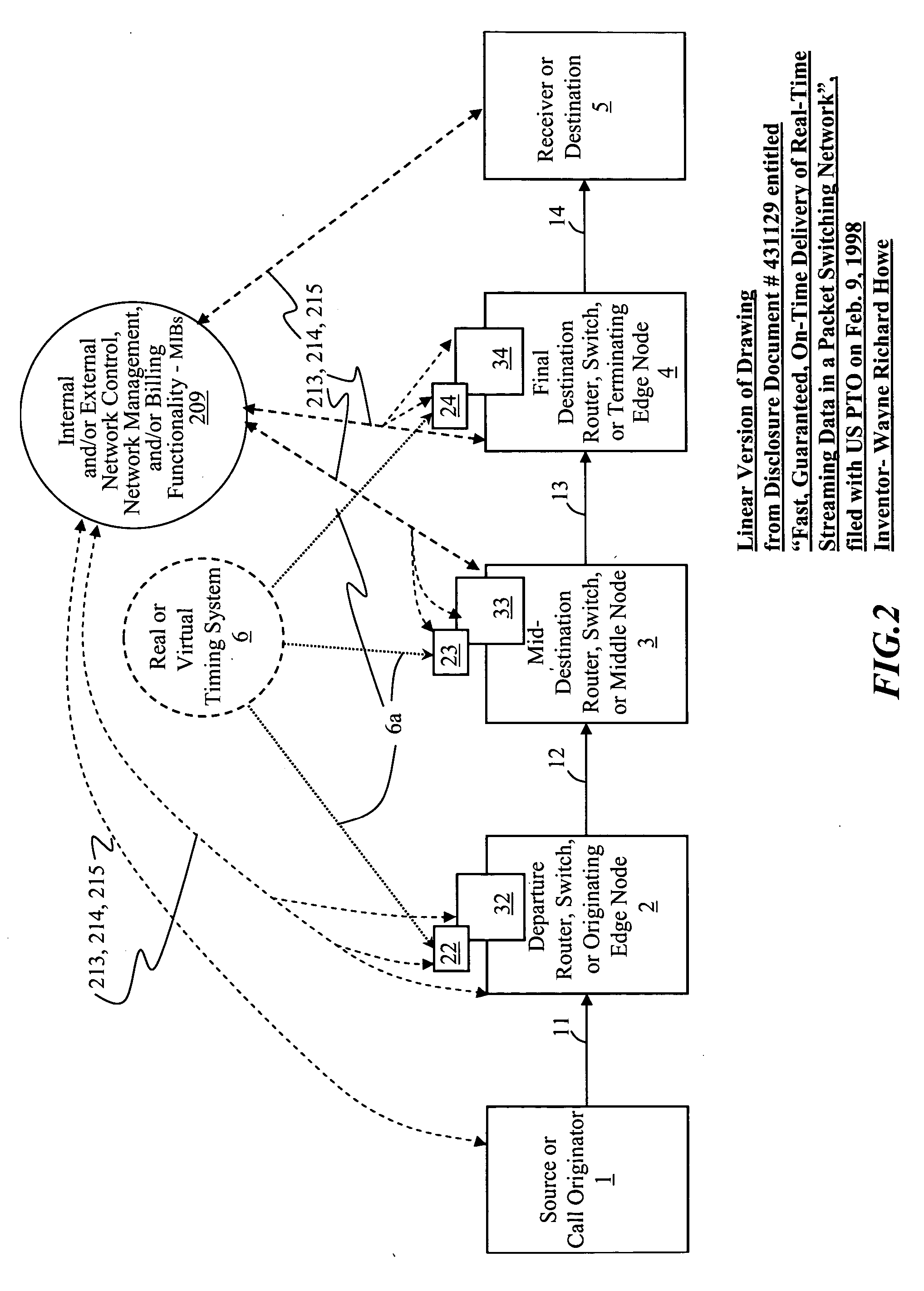Time-scheduled and time-reservation packet switching
a packet switching and time-scheduled technology, applied in the field of network communication, can solve the problems of inconvenient packet switching, inconvenient packet switching, and inability to efficiently or effectively perform the task, and each step is subject to varying slowdowns and delays
- Summary
- Abstract
- Description
- Claims
- Application Information
AI Technical Summary
Benefits of technology
Problems solved by technology
Method used
Image
Examples
first embodiment
FIG. 58 is a high level schematic diagram of a first embodiment and the preferred embodiment of an integrated time-scheduled and / or time-reserved datagram / packet network switch or router device according to the present invention comprising master clock synchronization means, input, output, control, and integrated store-and-forward switching means, and switching means which may be non-blocking, non-delaying switching means.
FIG. 58 shows a high level block diagram of a first embodiment, also termed the “integrated” embodiment, of an integrated time-scheduled and / or time-reserved datagram / packet switch. This preferred embodiment integrates a packet, cell, or frame switch 100 into the rest of the time-scheduled and / or time-reserved datagram / packet switch 32, 33, or 34, comprising a first input switch array 59; an input buffer array 60; a second input switch array 61; a controller 120 with timing synchronization means 22, 23, 24; a switching means which may be non-blocking, non-delaying ...
third embodiment
the device (not shown because it is a deconstruction of the second embodiment) can be implemented in which the “overlay” embodiment is used, but the input buffers are removed. This cost-cutting approach, also termed the “dummied down” embodiment theoretically could lose incoming packets, cells, or frames due to time-scheduled and / or time-reserved datagram / packet switching contention. However, practically speaking the output of the previous switch which is feeding the current input buffers must typically uses synchronization flags, frame delimiters, or the like, which is all that would probably be lost in this scenario. In the case that standard packets were lost, as they inevitably are in congested store-and-forward networks, standard protocols will generally ensure retransmission.
fourth embodiment
the device (not shown because it is a deconstruction of the second and third embodiments) can be implemented in which the “overlay” embodiment is used, but the input and output buffers are removed. This cost-cutting approach, also termed the “really dummied down” embodiment will undoubtedly lose outgoing packets, cells, or frames due to time-scheduled and / or time-reserved datagram / packet switching contention. In the case that standard packets, cells, or frames are lost, as they inevitably are in congested store-and-forward networks, standard protocols will generally ensure retransmission. However, this is viewed as a low-cost, low-performance trade-off and is not preferred. Nevertheless, the use of this approach has the advantages that time-scheduled and / or time-reserved datagram / packet packet switching with its benefits can be implemented over an existing store-and-forward network at very low cost, thus giving time-scheduled and / or time-reserved datagram / packet performance at the e...
PUM
 Login to View More
Login to View More Abstract
Description
Claims
Application Information
 Login to View More
Login to View More - R&D
- Intellectual Property
- Life Sciences
- Materials
- Tech Scout
- Unparalleled Data Quality
- Higher Quality Content
- 60% Fewer Hallucinations
Browse by: Latest US Patents, China's latest patents, Technical Efficacy Thesaurus, Application Domain, Technology Topic, Popular Technical Reports.
© 2025 PatSnap. All rights reserved.Legal|Privacy policy|Modern Slavery Act Transparency Statement|Sitemap|About US| Contact US: help@patsnap.com



